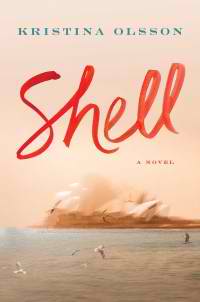
First published in Australia in 2018; published by Atria Books on October 9, 2018
Shell is about finding the shapes of the world. Pearl Keogh learned from her father to see the world as a triangle, the privileged residing at the apex, the masses providing the support that allows the privileged to stay on top. Axel Lindquist is searching to find the shapes that will express the identify of Sydney, Australia by examining its history, geography, and litter.
In 1965, Australia is about to start drafting soldiers to fight in Vietnam. Because she joined a protest against the draft, the newspaper that employs Pearl questioned her objectivity and relegated her to the women’s section.
Pearl’s younger brothers are draft age, but they ran away from the nuns that were minding them after their mother died. Now Pearl wants to find them, to protect them from the war. She does not think of them as missing. It is her old self that has gone missing, hidden behind “a veneer to protect herself, a shell she could slip beneath, to hide from the predatory world.” That’s one of several instances in which the novel’s title is used as a metaphor.
Kristina Olsson develops Pearl’s pain-filled backstory in detail, making clear her need for a purpose in a life that has closed all doors to opportunity. Pearl doesn’t realize that in the years since she last saw her brothers, they might have developed opinions about how to live their lives that she does not share.
Pearl’s story alternates with that of Axel, a glassmaker from Sweden who has been commissioned to make a piece for the foyer of Sydney’s controversial opera house. The architect who designed the opera house, Jørn Utzon, is a Dane who apparently became acquainted with Axel’s parents two decades earlier when Utzon helped smuggle Jews out of Denmark. Axel explains to Pearl that his father went missing in those years. That Pearl and Axel will get to know each other intimately is inevitable.
The story of conflict over Vietnam, turning neighbors against each other and causing pro-government Australians to spy on resisters, parallels the story of America, both during Vietnam and in our current climate of division. So does the story of art’s intersection with politics, as many come to view the opera house as a waste of money because conservative politicians oppose public art, preferring to fund bombs instead than beauty.
Other pervasive themes include the role of women in Australia’s male-dominated professions (particularly news media) during the 1960s; the way cultures sit atop each other, the new burying the old; the way architecture that “aspires to myth and dream” creates a “spirit of inquiry” that confronts or threatens residents who cling to parochial perspectives of their city; the way men and women around the world toil “without choice and little reward” while gaining strength and dignity from labor; the heavy weight of the past; and how intense experiences influence the creative process.
Olsson uses evocative prose to paint Sydney during the 1960s as a city divided by age and politics, while stressing the Australian quality of “mateness” that binds together its male residents. The resistance to Utzon’s design of the opera house is fascinating. My only criticism of Shell is that the story is too often dull. Pearl and Axel both live largely inside their sedate heads, and despite its attempt to make gain mileage from a late-blossoming plot twist, the novel builds no tension until its final pages. Still, the ending is dramatic, and for the ideas the story conveys, as well as the language that conveys them, Shell is worthy of a reader’s time.
RECOMMENDED